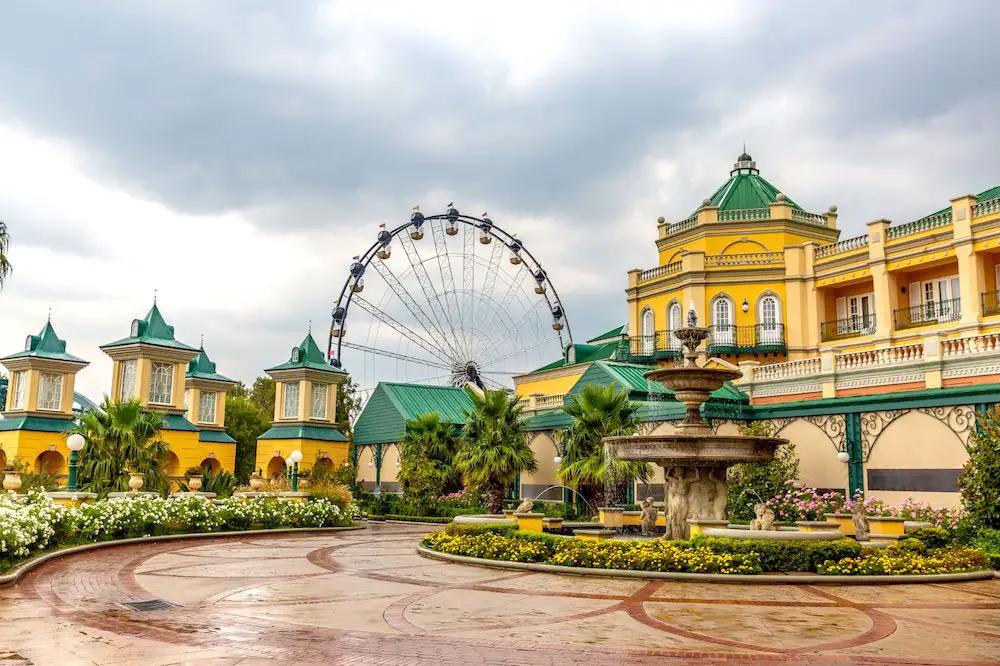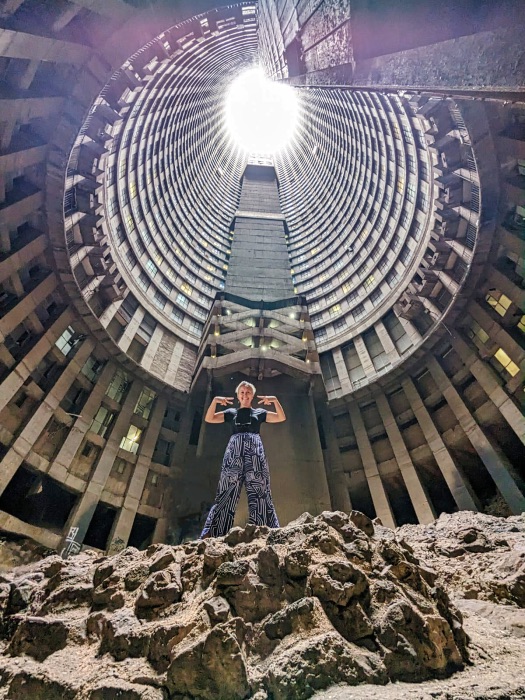
Johannesburg, often affectionately called Jo’burg or the City of Gold, is a metropolis that pulsates with an energy unlike any other. It’s a city of stark contrasts, where gleaming skyscrapers rise from the dusty earth, and ancient traditions intertwine with modern aspirations. Far from being just a transit hub, Johannesburg is a destination that deserves to be explored, offering a rich tapestry of history, culture, art, and adventure that will captivate any traveler.
A Glimpse into the Crucible of History:
The story of Johannesburg is inextricably linked to gold. In 1886, the discovery of a rich gold reef on the Witwatersrand changed the course of South African history. Prospectors from around the globe flocked to the region, transforming a desolate landscape into a bustling mining camp, which rapidly grew into the city we know today. This gold rush fueled industrialization, immigration, and ultimately, the complex socio-political landscape of South Africa, including the dark era of apartheid.

Related Articles about The City of Gold: Unveiling the Vibrant Tapestry of Johannesburg:
- Bangkok: A Symphony of Sights, Sounds, and Sensations – Your Ultimate Guide
- Edinburgh: A Journey Through Time in Scotland’s Enchanting Capital
- Jakarta: A Traveler’s Guide to the Bustling Capital of Indonesia
- Busan: A Coastal Gem of South Korea
- Beyond the Tulips and Windmills: A Comprehensive Guide to Experiencing the Netherlands
Understanding this history is crucial to appreciating Johannesburg. The city bears the scars of its past, but it also celebrates its resilience and the triumph of democracy. From the poignant reminders of oppression to the vibrant expressions of freedom, Johannesburg offers a profound journey through the human spirit.
Top Attractions: A Kaleidoscope of Experiences:
Johannesburg offers a diverse range of attractions to suit every interest. Here are some of the must-visit spots:
-
Constitution Hill: This former prison complex, once a notorious site of incarceration during apartheid, now stands as a powerful symbol of South Africa’s transition to democracy. Wander through the Old Fort, the Women’s Gaol, and the Number Four prison, where political prisoners like Nelson Mandela and Mahatma Gandhi were held. The Constitutional Court, with its striking architecture and art, is a testament to the nation’s commitment to justice and human rights. The panoramic views of the city from Constitution Hill are an added bonus.
-
Apartheid Museum: An absolute essential for understanding South Africa’s past, this museum offers a deeply moving and comprehensive account of the apartheid era. Through powerful exhibits, artifacts, and personal testimonies, visitors gain an intimate understanding of the injustices, the struggle for freedom, and the eventual dismantling of this brutal system. Allocate ample time for this visit, as it is emotionally impactful.

-
Soweto (South Western Townships): No visit to Johannesburg is complete without exploring Soweto. This iconic township, once a symbol of resistance, is now a vibrant hub of culture, history, and everyday life.
- Vilakazi Street: Famously the only street in the world to have housed two Nobel Peace Prize winners – Nelson Mandela and Archbishop Desmond Tutu – Vilakazi Street is a pilgrimage site. Visit the Nelson Mandela House Museum, a preserved glimpse into his life, and soak in the atmosphere of this historic street.
- Hector Pieterson Memorial and Museum: This memorial commemorates the Soweto Uprising of 1976, a pivotal moment in the anti-apartheid struggle. The museum offers a poignant look at the events of that day and the broader fight for educational equality.
- Orlando Towers: For the thrill-seekers, the iconic Orlando Towers offer bungee jumping and abseiling with a stunning backdrop of Soweto.
-
Maboneng Precinct: This revitalized urban neighborhood is a testament to Johannesburg’s creative spirit. Once an industrial area, Maboneng has been transformed into a trendy hub of art galleries, independent boutiques, vibrant street art, artisanal cafes, and rooftop bars. Explore the Market on Main on Sundays for a bustling array of food and craft stalls.
-
Cradle of Humankind: A UNESCO World Heritage Site, this area just outside Johannesburg is a treasure trove of palaeoanthropological discoveries. Visit the Maropeng Visitor Centre to learn about human evolution and explore the Sterkfontein Caves, where some of the most significant hominin fossils have been found.
-
Johannesburg Zoo: A sprawling green oasis in the heart of the city, the Johannesburg Zoo is home to a diverse collection of animals from around the world. It’s a great option for families and a peaceful escape from the urban hustle.
-
Gold Reef City: This popular theme park and casino complex is built on an old gold mine. Experience thrilling rides, learn about gold mining history at the mine shaft tour, and try your luck at the casino.
-
The Origins Centre: Located at the University of the Witwatersrand, this museum showcases the rich history of human origins in Southern Africa, displaying ancient artifacts and rock art.
-
Art Galleries: Johannesburg boasts a thriving art scene. Explore galleries like the Goodman Gallery, Everard Read Gallery, and the Johannesburg Art Gallery (JAG) to discover contemporary and historical South African art.
Travel Tips for a Seamless Journey:
- Visa Requirements: Check the visa requirements for your nationality well in advance of your trip. South Africa has specific entry regulations.
- Safety: Like any large city, it’s important to be aware of your surroundings. Avoid displaying expensive jewelry or electronics openly, and be cautious when walking alone at night, especially in less populated areas. Stick to well-lit and busy streets, and utilize reputable transportation services.
- Currency: The currency is the South African Rand (ZAR). ATMs are widely available, and credit cards are accepted in most establishments.
- Language: South Africa has 11 official languages. English is widely spoken in Johannesburg, particularly in tourist areas and business settings. You’ll also hear Afrikaans and various indigenous languages like isiZulu and isiXhosa.
- Tipping: Tipping is customary. A 10-15% tip is standard for good service in restaurants, and for hotel staff and tour guides.
- Electricity: South Africa uses Type M electrical plugs and operates on a 230V supply. Bring an adapter if necessary.
- Water: Tap water is generally safe to drink in Johannesburg, but if you have a sensitive stomach, bottled water is readily available.
- Sun Protection: The South African sun can be intense. Wear sunscreen, a hat, and sunglasses, especially during the summer months.
Accommodation Options: From Luxury to Budget-Friendly:
Johannesburg offers a wide spectrum of accommodation to suit every budget and travel style.
-
Luxury Hotels: For a pampered experience, consider hotels in Sandton, the city’s premier business and financial district. Options include The Saxon Hotel, Villas & Spa, The Michelangelo Hotel, and The Hilton Sandton. These hotels offer world-class amenities, fine dining, and impeccable service.
-
Boutique Hotels: For a more intimate and stylish stay, explore boutique hotels in areas like Parkhurst or Rosebank. These often offer unique character and personalized service.
-
Guesthouses and Bed & Breakfasts: Many charming guesthouses and B&Bs are scattered throughout Johannesburg, offering a more homey atmosphere and often at a more affordable price point. Areas like Melville and Craighall Park are known for their good guesthouse options.
-
Self-Catering Apartments: For longer stays or for those who prefer to have their own kitchen facilities, self-catering apartments are a great option, particularly in areas like Sandton or the central business district.
-
Hostels: Budget travelers will find a good selection of hostels, especially in the vibrant suburb of Melville, offering dormitory-style accommodation and a chance to meet fellow travelers.
Transportation: Navigating the City:
Getting around Johannesburg can be an adventure in itself. Here are the primary transportation options:
-
Gautrain: This modern and efficient rapid rail network connects Johannesburg to Pretoria, OR Tambo International Airport, and other key destinations. It’s a safe, clean, and reliable way to travel between major hubs.
-
Taxis and Ride-Sharing Services: Uber and Bolt are widely available and are generally the safest and most convenient way to get around the city, especially for shorter distances or when traveling at night. Traditional metered taxis are also available but can be more expensive.
-
Car Rental: If you plan to explore areas outside of Johannesburg or prefer the freedom of independent travel, renting a car is a viable option. However, be prepared for Jo’burg’s traffic, and ensure you have GPS or a reliable navigation app.
-
Guided Tours: For a hassle-free way to see the main attractions, consider booking guided tours. Many companies offer day trips to Soweto, the Cradle of Humankind, and other popular sites.
-
Local Buses and Taxis (Matatus): While more challenging for tourists, local buses and minibuses (known as "taxis" or "matatus") are the primary mode of transport for many residents. These can be crowded and less predictable, so they are not generally recommended for first-time visitors.
Best Time to Visit:
Johannesburg enjoys a pleasant climate for most of the year, making it a year-round destination. However, some periods are more ideal than others:
-
Spring (September to November): This is a beautiful time to visit. The weather is mild and pleasant, with average temperatures ranging from 15°C to 25°C. The jacaranda trees bloom in vibrant purple during October and November, transforming the city into a breathtaking spectacle.
-
Autumn (March to May): Similar to spring, autumn offers comfortable temperatures, typically between 15°C and 25°C. The air is crisp, and the summer rains have subsided, making it ideal for outdoor activities.
-
Summer (December to February): This is the warmest period, with temperatures often reaching the high 20s and even low 30s Celsius. It’s also the rainy season, with frequent afternoon thunderstorms. While it can be hot and humid, the rain often brings relief and lush greenery.
-
Winter (June to August): Johannesburg experiences dry and sunny winters. Daytime temperatures are generally mild, around 10°C to 20°C, but evenings and early mornings can be quite cold, dropping to near freezing. It’s a great time for sightseeing with clear skies and less chance of rain.
Conclusion:
Johannesburg is a city that defies easy categorization. It’s a dynamic blend of history, culture, and modernity, a place where the echoes of the past resonate with the vibrant pulse of the present. From the profound historical insights offered at Constitution Hill and the Apartheid Museum to the pulsating energy of Maboneng and the iconic streets of Soweto, Jo’burg offers an unforgettable travel experience. Embrace its complexities, engage with its stories, and you’ll discover a city that is not just the economic powerhouse of South Africa, but a true testament to its enduring spirit and unwavering hope for the future. The City of Gold awaits, ready to reveal its multifaceted charm.





